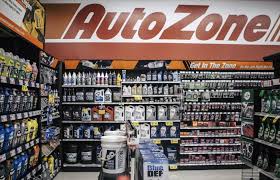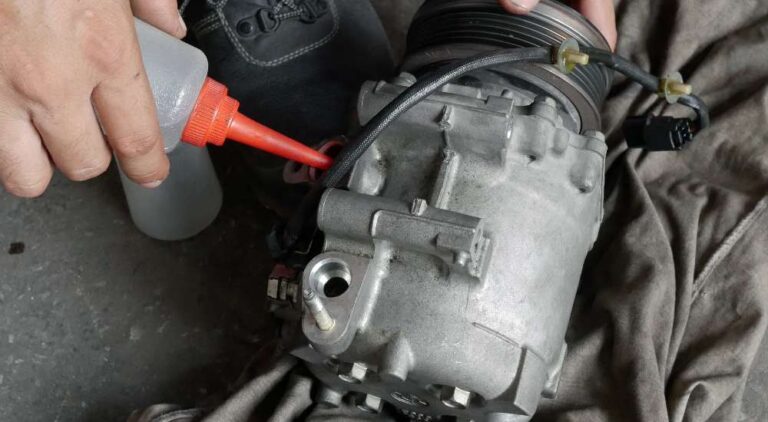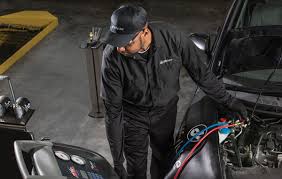Will a Crankshaft Sensor Keep a Car From Starting?

The crankshaft position sensor plays a vital role in your vehicle’s engine management system. It monitors the rotation of the crankshaft and provides this information to the engine control module (ECM). The ECM uses this data to control key functions like ignition timing and fuel injection. If the crankshaft sensor fails, it can lead to significant issues, including preventing the engine from starting. In this article, we will explore how a faulty crankshaft sensor affects the starting process and the symptoms to look out for.
What is the Crankshaft Position Sensor?
The crankshaft position sensor is an essential component in modern vehicles. It is located near the crankshaft or flywheel and monitors the rotational position and speed of the crankshaft. The sensor sends this information to the engine control module (ECM), which adjusts the timing of fuel injection and ignition to ensure the engine runs smoothly.
There are two primary types of crankshaft position sensors:
- Magnetic Sensors: These sensors use a magnet to detect changes in the crankshaft’s rotation.
- Hall-effect Sensors: These sensors use magnetic fields and electronic signals to detect the crankshaft’s position.
Both types of sensors are crucial for accurate engine timing, and when they fail, it can lead to several engine issues, including failure to start.
Can a Faulty Crankshaft Sensor Keep a Car From Starting?
Yes, a faulty crankshaft position sensor can prevent your car from starting. The ECM relies on the data from the crankshaft sensor to determine the timing of the ignition system and fuel injectors. If the sensor malfunctions or fails completely, the ECM will not receive the necessary signals to start the engine properly. As a result, the car may experience one or more of the following:
1. No Signal to the Engine Control Module
If the crankshaft position sensor fails entirely, it may stop sending any signal to the ECM. The ECM needs this signal to synchronize the fuel injection and ignition timing. Without it, the ECM cannot initiate the engine’s combustion process, and the engine won’t start.
2. Incorrect Timing
A malfunctioning sensor may still send incorrect signals to the ECM. This could cause the ECM to adjust the timing incorrectly, leading to poor engine performance, or more likely, preventing the engine from starting at all.
3. Failure to Detect Engine Position
Since the crankshaft sensor tracks the position of the crankshaft, its failure may prevent the ECM from accurately determining the engine’s position. This means the ECM won’t know when to fire the spark plugs, resulting in the car being unable to start.
Symptoms of a Faulty Crankshaft Position Sensor
A faulty crankshaft position sensor can lead to various symptoms, and these can often give you clues about why your car isn’t starting. The most common symptoms include:
1. No Start Condition
When the crankshaft position sensor fails, the engine will likely fail to start altogether. You might hear the starter motor turning over, but the engine won’t ignite. This is because the ECM is not receiving the necessary information to start the engine.
2. Engine Stalling
If the sensor fails intermittently, the engine might start but stall shortly after. This happens because the ECM may momentarily lose the signal from the crankshaft position sensor, causing the ignition system to malfunction.
3. Check Engine Light
A faulty crankshaft position sensor often triggers the “Check Engine” light on your dashboard. Diagnostic trouble codes (DTCs) related to the crankshaft sensor, such as P0335 (crankshaft position sensor “A” circuit malfunction), will likely be stored in the ECM. An OBD-II scanner can be used to check these codes.
4. Rough Idling or Hesitation
If the sensor is partially malfunctioning, it might send erratic signals to the ECM, causing rough idling, hesitation, or poor engine performance when starting the car. This could lead to a sluggish start or difficult starting conditions.
5. Hard Starting
In some cases, the engine might start, but it will take longer than usual. The incorrect timing of the fuel injection and ignition may cause the engine to struggle during the starting process, leading to hard starting conditions.
Diagnosing a Faulty Crankshaft Position Sensor
To determine if the crankshaft position sensor is causing your no-start issue, you will need to perform some diagnostic tests. A mechanic can use an OBD-II scanner to check for any stored trouble codes, which can help pinpoint the issue. Some of the most common trouble codes related to a bad crankshaft sensor include:
- P0335: Crankshaft position sensor “A” circuit malfunction
- P0336: Crankshaft position sensor “A” circuit range/performance problem
In addition to scanning for codes, a mechanic may visually inspect the crankshaft sensor and its wiring for any signs of damage or corrosion. They may also test the sensor’s resistance or voltage to ensure it’s operating correctly.
How to Fix a Faulty Crankshaft Position Sensor
If your crankshaft position sensor is determined to be faulty, it will need to be replaced. Here’s how the replacement process generally works:
1. Locate the Sensor
The crankshaft position sensor is typically located near the crankshaft or flywheel. Its exact location can vary depending on the make and model of the vehicle.
2. Disconnect the Battery
Before working on any electrical components, always disconnect the vehicle’s battery to avoid electrical shock or damage to other components.
3. Remove the Old Sensor
The mechanic will remove any components that obstruct access to the sensor, such as the engine cover or other parts. Once the sensor is accessible, they will disconnect the electrical connector and remove any bolts securing the sensor.
4. Install the New Sensor
The new crankshaft position sensor will be installed in the same location. The electrical connector will be reattached, and any parts removed during the process will be reinstalled.
5. Test the Engine
After the new sensor is installed, the mechanic will test the engine to ensure it starts correctly and runs smoothly.
Conclusion
In conclusion, a faulty crankshaft position sensor can indeed keep your car from starting. The sensor is crucial for providing the ECM with the information needed to control the ignition timing and fuel injection. When the sensor malfunctions, the ECM cannot function properly, which often results in a no-start condition. If you experience issues such as no start, engine stalling, rough idling, or hard starting, it’s a good idea to have your crankshaft sensor checked. Replacing the faulty sensor can restore proper engine performance and resolve any starting issues.
FAQs
1. Can a faulty crankshaft sensor cause other engine problems?
Yes, a faulty crankshaft position sensor can lead to engine misfires, rough idling, stalling, and poor acceleration due to incorrect timing of fuel injection and ignition.
2. How much does it cost to replace a crankshaft position sensor?
The cost of replacing a crankshaft position sensor typically ranges from $100 to $400, depending on the make and model of the vehicle.
3. Can I drive with a faulty crankshaft position sensor?
It is not advisable to drive with a faulty crankshaft position sensor, as it can cause engine performance issues, stalling, and eventually prevent the car from starting.
4. How do I know if the crankshaft position sensor is bad?
You can use an OBD-II scanner to check for trouble codes that indicate a faulty crankshaft sensor. Symptoms such as engine misfires, stalling, or a no-start condition can also be signs of a bad sensor.
5. Can a bad crankshaft position sensor cause the engine to stop while driving?
Yes, if the sensor fails while driving, it can cause the engine to stall because the ECM loses its ability to control the ignition and fuel timing.





